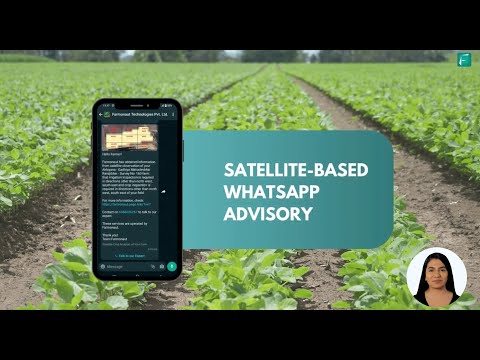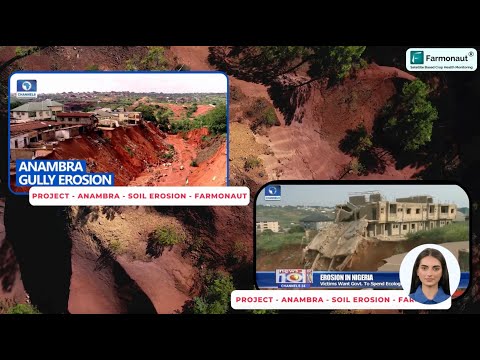Nebraska Water Policy Shake-Up: Proposed Agency Merger Sparks Conservation Debate
“Nebraska’s proposed Department of Water, Energy and Environment merger faces opposition from agricultural and conservation groups during a public hearing.”
“Nebraska’s water management debate highlights challenges in balancing government efficiency with protecting natural resources across its 77,358 square miles.”
As we delve into the heart of Nebraska’s water conservation efforts, a critical juncture has emerged that demands our attention. The proposed merger of state agencies to create a Department of Water, Energy and Environment has ignited a fierce debate, highlighting the ongoing challenges in water resource management and environmental policy in the Cornhusker State. This comprehensive analysis will explore the implications of this pivotal moment in Nebraska’s water management strategy, examining the potential consequences for agriculture, conservation, and government efficiency.
The Proposed Merger: A New Era for Nebraska’s Water Management?
Nebraska Governor Jim Pillen has put forward a bold plan to merge two state agencies: the Department of Environment and Energy and the Department of Natural Resources. This proposed consolidation, embodied in LB317 sponsored by Sen. Tom Brandt of Plymouth, aims to create a new entity called the Department of Water, Energy and Environment. The governor’s vision for this merger is twofold:
- To enhance the state’s ability to safeguard water quality and quantity for future generations
- To create efficiencies within the government structure
However, this proposal has met with significant opposition from key stakeholders in Nebraska’s agricultural and conservation communities. At a recent public hearing, representatives from these groups voiced their concerns, arguing that the merger could potentially distract from crucial water supply safeguarding initiatives rather than bolster them.

The Stakes: Nebraska’s Water Challenges
To understand the gravity of this debate, we must first appreciate the water challenges facing Nebraska:
- Increasing water demands from various sectors, including agriculture and industry
- Rising nitrate levels in groundwater, posing risks to public health and ecosystems
- The need to balance economic growth with sustainable water use
- Climate change impacts on water availability and quality
These challenges underscore the importance of effective water management policies and the potential consequences of any significant changes to the current system.
The Merger Proposal: Potential Benefits and Concerns
Proponents of the merger, including Governor Pillen, argue that the new department would:
- Streamline decision-making processes related to water management
- Reduce bureaucratic inefficiencies
- Enhance the state’s ability to address complex water issues holistically
However, critics have raised several concerns:
- Potential distraction from critical water supply initiatives
- Lack of specifics on how the merger would achieve its stated goals
- Uncertainties about cost savings and efficiency gains
- Possible unintended consequences for ongoing water projects and policies
These opposing viewpoints highlight the complexity of the issue and the need for a careful examination of the proposal’s potential impacts.
Stakeholder Perspectives: A Divided Landscape
The public hearing on LB317 revealed a stark divide among stakeholders:
- Support: Four testimonies in favor, all from Nebraska’s executive branch
- Opposition: Key agricultural and conservation groups voiced concerns
Notable opposition came from:
- Jasper Fanning, General Manager of the Upper Republican Natural Resources District
- Bruce Rieker, top lobbyist for the Nebraska Farm Bureau
- Leroy Sievers, representing the Nebraska State Irrigation Association
These stakeholders emphasized the potential risks of diverting focus from critical water projects and the lack of clear information on the merger’s benefits.
The Role of Technology in Water Management
As Nebraska grapples with these policy changes, it’s crucial to consider the role of technology in enhancing water management practices. Farmonaut, a pioneering agricultural technology company, offers satellite-based farm management solutions that could complement state efforts in water conservation. Their platform provides real-time crop health monitoring and AI-based advisory systems, which can help farmers optimize water use and reduce environmental impact.
Key features of Farmonaut’s technology include:
- Satellite-based crop health monitoring for efficient water management
- AI-driven personalized farm advisory tools
- Resource management solutions to optimize water usage
While Farmonaut is not directly involved in Nebraska’s policy discussions, its tools represent the type of innovative solutions that could support the state’s water conservation goals, regardless of the organizational structure of government agencies.

Comparative Analysis: Current vs. Proposed Water Management Structure
| Aspect | Current Structure | Proposed Merger |
|---|---|---|
| Responsible Agencies | Department of Environment and Energy; Department of Natural Resources | Department of Water, Energy and Environment |
| Primary Focus Areas | Separate focus on environmental regulation and natural resource management | Integrated approach to water, energy, and environmental issues |
| Budget Allocation (Estimated) | Split between two departments | Consolidated budget (exact figures not provided) |
| Staff Size (Estimated) | Combined workforce of about 365 employees | Potential for staff reallocation or reduction |
| Key Stakeholder Concerns |
|
|
The Path Forward: Balancing Efficiency and Effectiveness
As Nebraska lawmakers consider this significant restructuring of water management agencies, several key questions emerge:
- How can the state ensure that a merged department maintains focus on critical water issues?
- What measures will be put in place to track and evaluate the effectiveness of the new structure?
- How will the concerns of agricultural and conservation groups be addressed in the implementation process?
- What role can technology play in supporting the state’s water management goals, regardless of organizational structure?
These questions highlight the need for a comprehensive approach that considers not only governmental efficiency but also the long-term effectiveness of water conservation efforts.
Leveraging Technology for Water Conservation
While policy debates continue, it’s important to recognize the role that advanced technologies can play in supporting water conservation efforts. Farmonaut’s satellite-based solutions offer valuable tools for precision agriculture and efficient water management. By providing real-time data on crop health and soil moisture, such technologies can help farmers make informed decisions about irrigation and resource allocation, contributing to overall water conservation goals.
Key benefits of integrating technology into water management include:
- Improved accuracy in monitoring water usage and crop needs
- Data-driven decision-making for irrigation and resource allocation
- Enhanced ability to detect and respond to water stress in crops
- Support for sustainable farming practices that optimize water use
Public Engagement and Transparency
As the debate over Nebraska’s water policy shake-up continues, public engagement and transparency will be crucial. The state government should consider:
- Holding additional public hearings to gather more stakeholder input
- Providing detailed information on the proposed merger’s implementation plan
- Establishing clear metrics for evaluating the success of any organizational changes
- Creating channels for ongoing feedback from agricultural and conservation communities
By fostering an open dialogue and maintaining transparency throughout the process, Nebraska can work towards a water management structure that balances efficiency with effective conservation practices.
The Role of Innovation in Water Policy
As we consider the future of Nebraska’s water management, it’s essential to recognize the potential of innovative solutions. While government structures play a crucial role, the integration of cutting-edge technologies can significantly enhance water conservation efforts. Farmonaut’s satellite-based farm management solutions exemplify the type of innovation that can complement policy initiatives, regardless of the final governmental structure.
Key aspects of technological innovation in water management include:
- Precision agriculture techniques for optimal water use
- AI-driven analytics for predicting water needs and environmental impacts
- Remote sensing technologies for large-scale water resource monitoring
- Blockchain-based systems for transparent water rights management
By embracing these technological advancements, Nebraska can enhance its water conservation efforts, supporting both agricultural productivity and environmental sustainability.
Looking Ahead: The Future of Nebraska’s Water Management
As Nebraska stands at this critical juncture in its water policy, the decisions made today will have far-reaching implications for the state’s agricultural sector, environmental health, and economic future. While the proposed merger of state agencies has sparked significant debate, it has also opened up important conversations about the most effective ways to manage and conserve water resources.
Key considerations for the future include:
- Balancing the need for governmental efficiency with effective natural resource protection
- Integrating advanced technologies into water management strategies
- Ensuring continued focus on critical water supply initiatives
- Maintaining strong partnerships with agricultural and conservation stakeholders
- Adapting policies to address emerging challenges such as climate change impacts on water resources
As these discussions continue, it’s crucial for all stakeholders to remain engaged and for policymakers to carefully consider the long-term implications of any structural changes to water management agencies.
Conclusion: A Watershed Moment for Nebraska
The proposed merger of Nebraska’s water management agencies represents a watershed moment in the state’s approach to water conservation and environmental policy. While the debate highlights significant challenges, it also presents an opportunity for Nebraska to innovate and lead in sustainable water management practices.
As the state navigates this complex issue, the integration of advanced technologies, such as those offered by Farmonaut, could play a crucial role in supporting water conservation efforts, regardless of the final governmental structure. By combining thoughtful policy decisions with innovative technological solutions, Nebraska can work towards a future where water resources are managed efficiently, sustainably, and in harmony with the needs of both agriculture and the environment.
The outcome of this debate will undoubtedly shape Nebraska’s approach to water management for years to come. As stakeholders continue to engage in these important discussions, the focus must remain on ensuring the long-term health and sustainability of the state’s vital water resources.
FAQ: Nebraska’s Water Policy Shake-Up
Q: What is the proposed merger in Nebraska’s water management?
A: The proposal aims to merge the Department of Environment and Energy with the Department of Natural Resources to create a new Department of Water, Energy and Environment.
Q: Why is this merger being proposed?
A: The governor argues it will create efficiencies and help safeguard water quality and quantity for future generations.
Q: Who opposes the merger?
A: Key agricultural and conservation groups have voiced opposition during public hearings.
Q: What are the main concerns about the merger?
A: Critics worry it may distract from crucial water supply initiatives, lack specifics on efficiency gains, and have unintended consequences.
Q: How might this affect Nebraska’s water conservation efforts?
A: The impact is uncertain, with proponents claiming improved efficiency and opponents fearing a loss of focus on critical water issues.
Q: What role can technology play in water management?
A: Advanced technologies, like those offered by Farmonaut, can provide real-time data and insights to support efficient water use and conservation efforts.
Q: What’s the next step in this process?
A: The proposal will continue to be debated by lawmakers, with potential for further public hearings and stakeholder input.
Earn With Farmonaut: Affiliate Program
Earn 20% recurring commission with Farmonaut’s affiliate program by sharing your promo code and helping farmers save 10%. Onboard 10 Elite farmers monthly to earn a minimum of $148,000 annually—start now and grow your income!
For developers interested in integrating Farmonaut’s technology into their own applications, check out our API and API Developer Docs.







